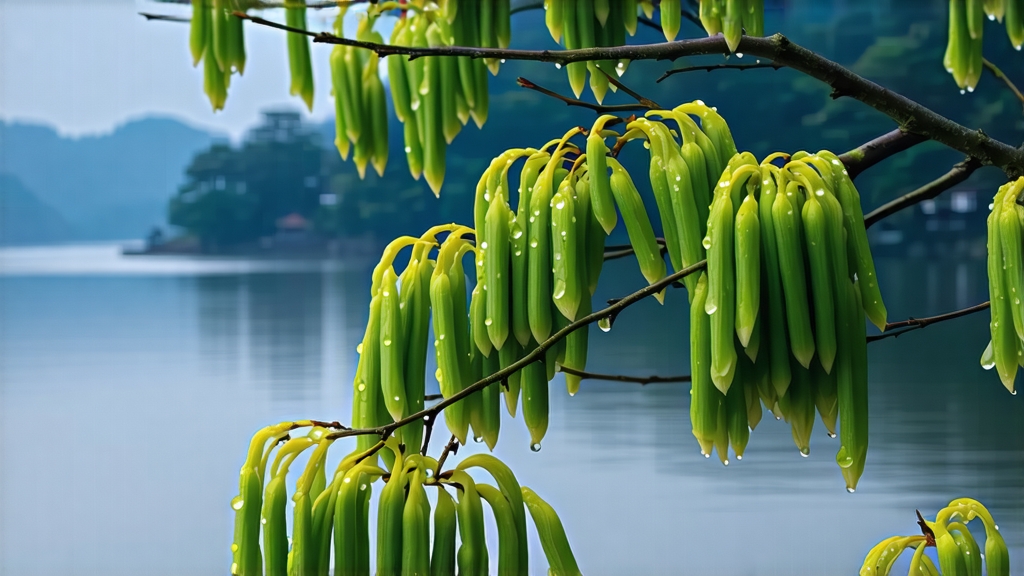
Biluochun, whose name translates literally to “Green Snail Spring,” is one of China’s ten most celebrated teas, yet it remains a quiet treasure beyond the circles of serious tea lovers. Grown almost exclusively on the mist-laden, fruit-tree-capped hills that ring Lake Tai in Jiangsu Province, this downy green tea seduces with a fragrance so naturally floral that first-time drinkers often ask whether petals have been blended into the leaves. The short answer is no: the aroma is the tea’s own, coaxed into existence by a 600-year-old choreography of soil, micro-climate, cultivar, and human hand.
History and Legend
The earliest written record appears in the late-Ming “Tea Compendium” of 1630, but local lore pushes the origin back to the reign of the Kangxi Emperor (1662-1722). The story tells of a tea picker who, running late, tucked fresh shoots into her bosom. Body heat lightly oxidized the leaves, releasing an unprecedented perfume that attracted the emperor’s attention during an inspection tour. Enchanted, he renamed the tea from “Xia Sha Ren Xiang”—literally “scary fragrance”—to the more elegant “Biluochun.” Apocryphal or not, the tale captures the tea’s defining trait: an aroma so heady it startles.
Cultivar and Terroir
Only the small-leaf Camellia sinensis var. sinensis thrives here. The bushes are interplanted with peach, plum, and apricot trees whose blossoms drop petals that decompose into the acidic, well-draining loam. Spring mists slow photosynthesis, forcing the plant to stockpile amino acids—especially L-theanine—yielding sweetness and umami. Night temperatures drop sharply, locking volatile floral compounds inside the tender buds. The finest grade, “Seven-Hundred Mu Precious,” is picked before the Qingming festival when each bud is barely 1.5 cm long and still folded like a miniature paper fan.
Plucking Standard
The classic rule is “one bud with one unfolding leaf,” but top lots demand “single spear” plucking—just the unopened bud. Experienced pickers finish before 9 a.m. while dew still sparkles; they deposit leaves into shallow bamboo baskets to prevent bruising. Five kilograms of fresh tips yield barely 500 g of finished tea, explaining why imperial-grade Biluochun can command over US $1,000 per 100 g.
Crafting the Spiral
Withering: Leaves are spread 2 cm thick on perforated bamboo trays for 60–90 minutes, softening cell walls and reducing grassy notes.
Fixation: A wok heated to 180 °C receives 250 g of leaf. The master’s palms press, flick, and shake for precisely 3.5 minutes, deactivating enzymes while moisture plummets from 76 % to 58 %.
Rolling: Temperature drops to 70 °C. The artisan rubs the leaf mass along the wok’s wall in clockwise circles, curling it into the signature spiral resembling a snail shell. This 15-minute step ruptures surface cells, fusing leaf juices with ambient fruit-blossom volatiles.
Final drying: At 50 °C the tea is gently tossed until moisture falls below 7 %. Tiny white hairs—“down”—survive intact, shimmering like frost under light.
Grading System
Supreme (Special Grade): snail-tight curls, white tips > 90 %, infusion the color of “early morning lake.”
Grade I: slightly looser roll, 70 % tips, softer fragrance.
Grade II: mixed bud-leaf ratio, pale green liquor, simple sweet finish.
Anything below Grade II is rarely exported; locals drink it as everyday “lake tea.”
Water & Vessel Protocol
Water: Spring water at 75 °C, TDS 30–80 ppm. Avoid distilled water; it flattens amino acids.
Ratio: 3 g leaf to 120 ml vessel.
Glass tulip cup or 150 ml porcelain gaiwan; glass allows observation of the “three-stage dance.”
Rinse: None; the first pour is the revelation.
Infusions:
1st: 30 s, 80 % submerged leaves unfurl, aroma of white peach and lilac.
2nd: 20 s, liquor brightens to jade, taste of fresh garden pea and a trace of marine nori.
3rd: 35 s, nectarine sweetness lengthens, finish echoes alpine spring water.
Fourth